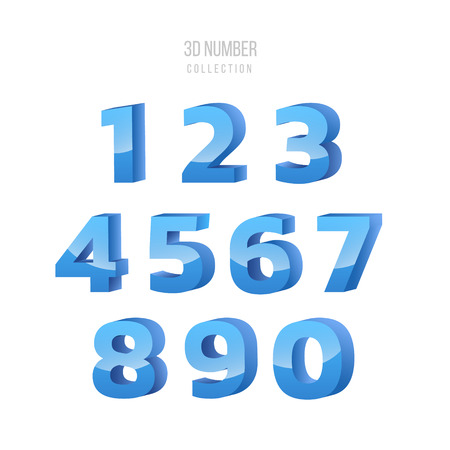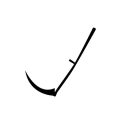The Victorian Fascination with the Occult
Victorian Britain, a period marked by extraordinary progress and profound upheaval, was uniquely poised to become a crucible for occult exploration. While the industrial revolution transformed cities and daily life, and scientific advances challenged longstanding beliefs, a parallel yearning for spiritual meaning flourished among the population. The Victorians, with their characteristic blend of rational curiosity and romantic idealism, found themselves captivated by the mysteries of the unseen. Esoteric traditions, such as Tarot, mesmerism, and spiritualism, seeped into parlours and drawing rooms from Bloomsbury to Bath. These practices promised answers to existential questions left unresolved by science and organised religion. Driven by an appetite for discovery—and perhaps a desire to reclaim agency in an age of relentless change—Victorian society eagerly embraced the occult as both entertainment and serious spiritual pursuit. This fascination was not merely a passing fad but reflected deeper currents within British culture, where the boundaries between scepticism and belief, tradition and innovation, were constantly renegotiated.
2. The Re-Emergence of Tarot in Nineteenth-Century Britain
During the latter half of the nineteenth century, Britain witnessed a remarkable resurgence of interest in esoteric traditions, with Tarot cards emerging as both a subject of fascination and a tool for spiritual exploration. Far from being a mere parlour amusement, Tarot began to attract the attention of intellectuals, avant-garde artists, and newly-formed occult societies. The period was marked by a profound cultural shift, as Victorian society grappled with questions of science, faith, and the unseen world. Within this vibrant context, Tarot was not simply reintroduced—it was reinterpreted and repurposed to fit the intellectual climate of the day.
The Intellectual and Artistic Circles
The late Victorian era saw an unprecedented cross-pollination between the arts and esotericism. Writers such as Arthur Edward Waite and artists like Pamela Colman Smith collaborated on what would become the iconic Rider-Waite-Smith deck, blending mystical symbolism with contemporary artistic sensibilities. Literary salons and artistic gatherings became fertile ground for Tarot readings, where the cards served both as inspiration for creative works and as a means to probe the mysteries of the psyche. These interactions were not isolated; rather, they reflected a broader appetite among the British intelligentsia for new systems of meaning in an age of rapid change.
Spiritual Societies and Secret Orders
Parallel to these artistic developments was the rise of spiritual societies such as the Hermetic Order of the Golden Dawn. These groups played a pivotal role in disseminating Tarot knowledge among their members, often imbuing the cards with layered systems of symbolism drawn from Kabbalah, astrology, and alchemy. The British approach was notably syncretic—esoteric traditions from across Europe were melded into a uniquely local expression. The table below outlines the key groups and their contributions:
| Society/Order | Notable Figures | Contribution to Tarot |
|---|---|---|
| Hermetic Order of the Golden Dawn | W.B. Yeats, S.L. MacGregor Mathers | Systematic esoteric frameworks; ritual use of Tarot |
| Theosophical Society | Annie Besant, Charles Leadbeater | Philosophical reinterpretation; blending of Eastern and Western mysticism |
| Aesthetic Movement Circles | Oscar Wilde, Aubrey Beardsley | Integration of Tarot imagery into visual and literary arts |
The Role of Print and Popular Media
The expansion of print media in Victorian Britain also played a crucial part in Tarot’s re-emergence. Occult periodicals, pamphlets, and serialized fiction introduced Tarot concepts to a wider audience, often demystifying or sensationalising them in equal measure. These publications not only informed the curious but also helped to construct a shared language around Tarot that transcended class and background—a testament to the cards’ adaptability within British culture.
A Lasting Legacy
In summary, the late Victorian era’s engagement with Tarot was anything but superficial. Through intellectual curiosity, artistic experimentation, and the activities of spiritual societies, Tarot became woven into the fabric of British esotericism. This re-emergence laid the groundwork for the enduring popularity of Tarot in the UK, setting the stage for its continued evolution in the twentieth century and beyond.

3. Societies and Secret Orders: Engines of Esoteric Practice
The late Victorian era witnessed a remarkable proliferation of secret societies and esoteric orders, many of which played a pivotal role in the occult revival sweeping across Britain. Chief among these was the Hermetic Order of the Golden Dawn, an organisation whose influence on British esotericism remains unparalleled. Founded in 1888, the Golden Dawn became a veritable crucible for mystical thought, ceremonial magic, and the reinterpretation of ancient wisdom traditions within a distinctly British context.
The Golden Dawn: Architects of Occult Renaissance
Unlike earlier clandestine groups, the Golden Dawn prided itself on intellectual rigour as much as on ritual spectacle. Its members—ranging from poets and academics to politicians—were drawn by its promise of spiritual enlightenment through structured study and symbolic practice. The Tarot deck, once relegated to parlour games or divinatory curiosities, was elevated within Golden Dawn circles to an object of scholarly inquiry and mystical contemplation. Members meticulously studied each card’s arcane symbolism, integrating Qabalistic, astrological, and mythological correspondences that reflected both personal transformation and universal truths.
Tarot as a Bridge Between Worlds
The Golden Dawn’s approach reframed Tarot not merely as fortune-telling but as a sophisticated system for exploring consciousness and spiritual evolution. Through elaborate rituals and meditative exercises, adepts used Tarot as both a key to inner worlds and a tool for mapping cosmic forces. This blend of mysticism with intellectual pursuit resonated with Victorian sensibilities—where science, art, and spirituality were often seen as interconnected quests for meaning.
Beyond the Lodge: Lasting Influence on British Occultism
Though shrouded in secrecy during its heyday, the legacy of organisations like the Golden Dawn soon permeated broader culture. Their embrace of Tarot catalysed its migration from closed circles into popular imagination, paving the way for later interpretations by figures such as Aleister Crowley and Arthur Edward Waite. Today, echoes of Victorian esoteric societies are still felt in British tarot practices—where deep scholarship meets intuitive exploration, and the quest for hidden knowledge continues to inspire seekers across generations.
4. Cross-Pollination: Tarot, Literature, and the Arts
The Victorian era was a time of striking cross-pollination between occult symbolism and the creative expressions of literature and the arts. As tarot cards gained traction among spiritual circles in Britain, their intricate imagery and archetypes began to leave an indelible mark on both popular culture and highbrow artistic endeavours. This period saw writers, poets, painters, and designers drawing inspiration from esoteric traditions, weaving tarot’s mystical language into the very fabric of their work.
The Literary Imagination: Tarot as Metaphor
Victorian authors such as Arthur Machen and Algernon Blackwood infused their stories with occult undertones, often referencing tarot archetypes to symbolise fate, transformation, or hidden knowledge. The Pre-Raphaelite Brotherhood, deeply interested in myth and mystery, frequently incorporated symbolic motifs echoing tarot’s visual lexicon. Even mainstream novelists like Oscar Wilde flirted with arcane imagery, using symbols akin to The Fool or The Magician to critique society or explore the duality of human nature.
Visual Arts: A Canvas for Esoteric Symbolism
The visual arts during this period became a fertile ground for expressing the ineffable. Artists such as Pamela Colman Smith—herself an illustrator of the now-classic Rider-Waite Tarot—blended British folklore with hermetic symbols, crafting images that resonated with both the initiated and the curious public. Decorative arts also adopted motifs from tarot cards; stained glass windows, wallpaper patterns, and jewellery designs often hinted at arcane meanings just beneath the surface. This integration of mystical symbolism lent an air of enchantment to everyday life and elevated mundane objects into talismans of sorts.
Cultural Trends: Symbolism Beyond the Cards
Tarot’s influence extended well beyond individual works of art or literature. Esoteric societies like the Hermetic Order of the Golden Dawn played a pivotal role in disseminating occult knowledge among Britain’s intellectual elite. Public lectures, salons, and illustrated publications helped popularise a symbolic worldview that encouraged Victorians to seek meaning in signs and synchronicities.
Examples of Tarot Influence in Victorian Culture
| Domain | Key Figures/Works | Tarot/Esoteric Elements |
|---|---|---|
| Literature | Bram Stokers “Dracula” | Archetypes of death & rebirth; supernatural fate |
| Visual Arts | Pamela Colman Smiths illustrations | Direct incorporation of tarot iconography |
| Theatre | Oscar Wildes plays | Masks and duality reminiscent of The Fool/The Magician |
A Unique Synthesis
This era’s fascination with the tarot was not mere escapism but a testament to Victorian Britain’s restless spirit—its hunger for deeper meaning amid rapid social change. By blending symbolism drawn from ancient sources with modern creativity, artists and writers constructed a uniquely British esoteric tradition that still echoes through contemporary culture. The tarot thus became more than a fortune-telling tool; it evolved into a cultural bridge linking imagination, art, and mysticism in Victorian society.
5. Lasting Legacy: The Echoes of Victorian Esotericism Today
The Victorian occult revival continues to cast a long shadow over contemporary British perspectives on Tarot, spirituality, and the pursuit of alternative knowledge. Far from being a mere historical curiosity, the era’s fascination with the mystical and arcane has shaped the way modern Britons approach the unknown, blending rational scepticism with a keen appetite for the esoteric. The symbolic language of Tarot, first popularised in drawing rooms and secret societies of Victorian London, has become part of the cultural fabric—offered not only by professional readers in city markets but also discussed in mainstream media, literature, and academic circles.
The Mainstreaming of Tarot and Spiritual Practices
Where once Tarot was whispered about in exclusive clubs or hidden behind velvet curtains, today it stands proudly in high street bookshops and artisan markets alike. This shift owes much to the Victorian appetite for occult knowledge, which normalised the exploration of spiritual mysteries outside orthodox religion. The syncretic approach of Victorian esotericists—fusing Eastern philosophies, Hermeticism, and scientific curiosity—laid the groundwork for a pluralistic and open-minded British spirituality. Now, Tarot is as likely to be used as a tool for personal reflection and mental well-being as it is for divination, reflecting a distinctly British pragmatism interwoven with an enduring fascination for the mystical.
Enduring Influence on British Culture and Identity
The legacy of Victorian occultism can be seen in everything from popular fiction—think of the magical undertones in works by Neil Gaiman or Susanna Clarke—to the continuing reverence for British occult figures such as Aleister Crowley or Pamela Colman Smith. Festivals, workshops, and online communities dedicated to Tarot and esoteric traditions thrive across Britain, reflecting a uniquely British blend of eccentricity, intellectual inquiry, and spiritual curiosity. Even in politics and art, echoes of Victorian esotericism surface through symbolism, ritual, and a collective yearning for meaning beyond material reality.
A Living Tradition: From Heritage to Contemporary Dialogue
The dialogue between past and present continues to evolve. Contemporary British practitioners engage critically with the legacies of their Victorian forebears, questioning issues of gender, class, and colonial influence within esoteric traditions. Yet, there remains a deep respect for the creativity and boundary-pushing spirit that defined the era. The Victorian occult revival did more than revive ancient wisdom; it sparked an ongoing conversation about what it means to seek knowledge outside conventional boundaries—a conversation that remains at the heart of Britain’s spiritual landscape today.


